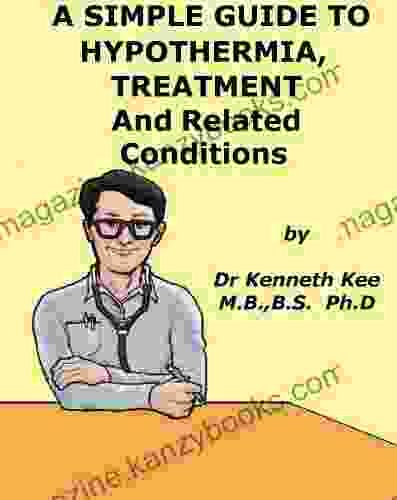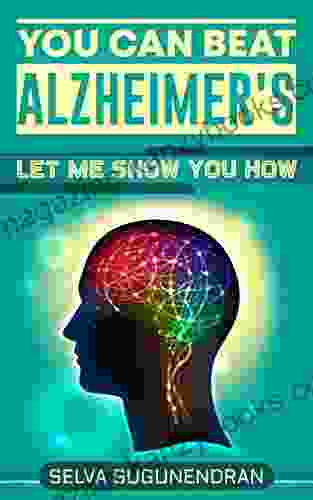The Ultimate Guide to Hypothermia Treatment and Related Diseases

Hypothermia is a medical condition that occurs when the body loses heat faster than it can produce heat, causing a dangerously low body temperature. Severe hypothermia can lead to organ failure, coma, and even death.
This guide will provide you with everything you need to know about hypothermia, including its causes, symptoms, treatment, and prevention. We will also discuss related diseases that can cause hypothermia, such as frostbite and trench foot.
Hypothermia can be caused by any condition that leads to excessive heat loss, such as:
5 out of 5
| Language | : | English |
| File size | : | 396 KB |
| Text-to-Speech | : | Enabled |
| Screen Reader | : | Supported |
| Enhanced typesetting | : | Enabled |
| Word Wise | : | Enabled |
| Print length | : | 112 pages |
| Lending | : | Enabled |
- Exposure to cold temperatures: This is the most common cause of hypothermia. When the body is exposed to cold temperatures, it loses heat through conduction, convection, radiation, and evaporation. If the body cannot produce enough heat to compensate for this heat loss, hypothermia can occur.
- Immersion in cold water: Cold water conducts heat away from the body much faster than air. Even brief immersion in cold water can lead to hypothermia.
- Prolonged exposure to cold, wet, or windy conditions: Even if the air temperature is not particularly cold, exposure to cold, wet, or windy conditions can lead to hypothermia. This is because these conditions can cause the body to lose heat through evaporation.
- Certain medical conditions: Some medical conditions, such as hypothyroidism and diabetes, can make the body more susceptible to hypothermia.
The symptoms of hypothermia can vary depending on the severity of the condition. Mild hypothermia may cause shivering, pale skin, and cold hands and feet. Moderate hypothermia can cause confusion, drowsiness, and slurred speech. Severe hypothermia can cause seizures, coma, and death.
The treatment of hypothermia depends on the severity of the condition. Mild hypothermia can be treated by removing the person from the cold environment, warming them up with blankets or warm water, and giving them warm drinks. Moderate hypothermia requires more aggressive treatment, such as heated IV fluids and oxygen. Severe hypothermia requires emergency medical treatment.
The best way to prevent hypothermia is to avoid exposure to cold temperatures. However, if you must be exposed to cold temperatures, there are a few things you can do to reduce your risk of hypothermia, such as:
- Dress warmly: Wear layers of loose-fitting, lightweight clothing. Avoid wearing tight-fitting clothing, as this can restrict blood flow and make it more difficult for the body to stay warm.
- Cover your head and neck: A hat and scarf can help to keep your head and neck warm.
- Wear gloves and socks: Gloves and socks can help to keep your hands and feet warm.
- Stay dry: Wet clothing can conduct heat away from the body. If you get wet, change into dry clothes as soon as possible.
- Avoid alcohol and caffeine: Alcohol and caffeine can both cause the body to lose heat.
In addition to hypothermia, there are a number of other diseases that can be caused by exposure to cold temperatures. These diseases include:
- Frostbite: Frostbite is a condition that occurs when the skin and underlying tissues freeze. Symptoms of frostbite include pain, swelling, and numbness. Severe frostbite can lead to tissue damage and amputation.
- Trench foot: Trench foot is a condition that occurs when the feet are exposed to cold, wet conditions for a prolonged period of time. Symptoms of trench foot include pain, swelling, and numbness. Severe trench foot can lead to tissue damage and amputation.
Hypothermia is a serious medical condition that can lead to organ failure, coma, and even death. However, hypothermia can be prevented by avoiding exposure to cold temperatures and dressing warmly when exposed to cold temperatures. If you suspect that someone is suffering from hypothermia, seek medical attention immediately.
5 out of 5
| Language | : | English |
| File size | : | 396 KB |
| Text-to-Speech | : | Enabled |
| Screen Reader | : | Supported |
| Enhanced typesetting | : | Enabled |
| Word Wise | : | Enabled |
| Print length | : | 112 pages |
| Lending | : | Enabled |
Do you want to contribute by writing guest posts on this blog?
Please contact us and send us a resume of previous articles that you have written.
 Book
Book Novel
Novel Page
Page Chapter
Chapter Text
Text Story
Story Genre
Genre Reader
Reader Library
Library Paperback
Paperback E-book
E-book Magazine
Magazine Newspaper
Newspaper Paragraph
Paragraph Sentence
Sentence Bookmark
Bookmark Shelf
Shelf Glossary
Glossary Bibliography
Bibliography Foreword
Foreword Preface
Preface Synopsis
Synopsis Annotation
Annotation Footnote
Footnote Manuscript
Manuscript Scroll
Scroll Codex
Codex Tome
Tome Bestseller
Bestseller Classics
Classics Library card
Library card Narrative
Narrative Biography
Biography Autobiography
Autobiography Memoir
Memoir Reference
Reference Encyclopedia
Encyclopedia Samuel Gullons
Samuel Gullons Steve Slocum
Steve Slocum Kenneth Winter
Kenneth Winter Kevin Klinkenberg
Kevin Klinkenberg Kenneth J Howell
Kenneth J Howell Zach Royer
Zach Royer Mike Petrik
Mike Petrik Padma Aon Prakasha
Padma Aon Prakasha Kimberly Ridley
Kimberly Ridley William Pullen
William Pullen Naci Sigler
Naci Sigler Viveka Von Rosen
Viveka Von Rosen Kevin P Winn
Kevin P Winn Larry P Mahan
Larry P Mahan Vicky Ushakova
Vicky Ushakova Keta Loren
Keta Loren Olivia Howard
Olivia Howard Ken Hultman
Ken Hultman Lawrence D Longo
Lawrence D Longo Kevin Hillstrom
Kevin Hillstrom
Light bulbAdvertise smarter! Our strategic ad space ensures maximum exposure. Reserve your spot today!

 Craig BlairUnveiling the Wisdom and Eloquence of Abdur Raheem: A Literary Journey into...
Craig BlairUnveiling the Wisdom and Eloquence of Abdur Raheem: A Literary Journey into... Roberto BolañoFollow ·4.7k
Roberto BolañoFollow ·4.7k Jesus MitchellFollow ·8.6k
Jesus MitchellFollow ·8.6k Vince HayesFollow ·8.2k
Vince HayesFollow ·8.2k Fred FosterFollow ·8.6k
Fred FosterFollow ·8.6k Lawrence BellFollow ·4.6k
Lawrence BellFollow ·4.6k Tony CarterFollow ·2k
Tony CarterFollow ·2k Seth HayesFollow ·10.8k
Seth HayesFollow ·10.8k Angelo WardFollow ·8.7k
Angelo WardFollow ·8.7k

 Ernesto Sabato
Ernesto SabatoLoving Table: Creating Memorable Gatherings
Gatherings...

 Mark Twain
Mark TwainLifestyle After Cancer: The Facts
Cancer is a life-changing...

 Keith Cox
Keith CoxUnlocking the Nutritional Needs of Individuals with...
Individuals with physical disabilities...

 Rubén Darío
Rubén DaríoHandbook And Guide To Evaluation And Treatment
Empowering Healthcare...

 Andy Hayes
Andy HayesUnveiling the Truth: "Garden Myths" by Robert Pavlis...
The world of gardening is often filled with a...
5 out of 5
| Language | : | English |
| File size | : | 396 KB |
| Text-to-Speech | : | Enabled |
| Screen Reader | : | Supported |
| Enhanced typesetting | : | Enabled |
| Word Wise | : | Enabled |
| Print length | : | 112 pages |
| Lending | : | Enabled |












